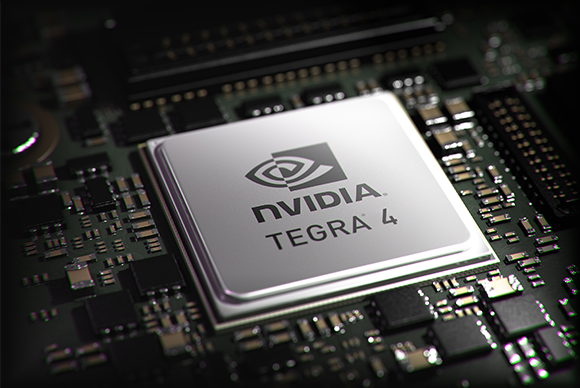
Android gaming is starting to make gamers look like overly amorous honeybees in a halvah factory: The prospects are so sweet that they might put your teeth at risk. With the advent of dedicated Android gaming devices such as the Ouya and Project Shield, Android is quickly gaining respect as a serious gaming platform alongside consoles and PCs. And with powerful phones rapidly becoming ubiquitous, Android is beating the pants off of iOS as a gaming platform for enthusiasts and nongamers alike. In this article, we’ll help you stay on top of evolving Android hardware, and use it to its maximum high-scoring, social-browbeating, multicore-rendering potential.
All shapes and sizes
First of all, let’s review those dedicated gaming devices. Last summer’s Kickstarter darling, Ouya, starts shipping this spring, with Nvidia’s Project Shield and others expected to reach market soon afterward. These stand-alone game consoles are likely to set the tone for the next generation of gaming on Android phones. I say “next generation” because, for all the fancy new tech that rolls out every month, the first truly mature group of Android devices (from 2010 or so onward) can still run almost any game on Google Play.
Of course, a device's ability to run a game at all doesn't mean much to a gamer who wants to play at full speed and top quality; and owners of two-year-old phones may find themselves resorting to games’ low-spec options more often, resulting in games that may look as though they came straight out of the early 1990s. Still, aside from graphics-intensive titles like Horn and Dead Trigger, you won’t have much trouble with the current crop of games on a single-core, first-generation Snapdragon processor (just ask my old HTC G2). Accessibility is a good thing; PC-quality visuals are even better. So how do you keep up, in a market that encourages people to throw something new in their pocket every two years and hope for the best?
A safe bet would be to skew as close to dedicated gaming devices as possible, knowing that the high-end games of 2013 and 2014 will look and perform as well on your phone or tablet as they would on your HDTV. That means insisting on Qualcomm’s quad-core S4 Pro hardware—which in turn means springing for one of the current top-of-the-top smartphone models: the LG Optimus G, the HTC Droid DNA (which also has Beats audio), or the Samsung Galaxy Note II.
Having said that, however, I advise you not to get stressed about the CPU. As long as your phone is less than two years old, you should be fine. The three phones I just mentioned represent each major manufacturer’s current flagship device—so your phone won't feel outdated 12 seconds after you buy it—and there’s no reason to expect that all Android developers will start making games that require a four-core beast. Scooch down to the HTC One S (also with Beats audio) or the Samsung Galaxy S3, both of which run on a dual-core Snapdragon S4 processor, and you can still play most games that are available in the Play Store without much trouble. Cheapening my own advice? Maybe—but now you know!
Among the other hardware features to consider, a high-resolution display is especially important. HTC's Super LCD 2 technology is responsible for some of the nicest screens around, followed closely by LG (with IPS) and Samsung (with Super AMOLED). Audio quality follows a similar path, with HTC's phones equipped with Beats Audio providing a much better overall listening experience when compared to the competition.
Other Peripherals
Who needs an Ouya when your phone can output 1080p video to your TV? The only extra you’ll have to supply is an MHL (Mobile High-Definition Link) adapter dongle. As usual, there are OEM versions and super-cheap no-name brands that may or may not work; always search with the name of your device in mind, and keep in mind that theGalaxy S3 MHL adapter is strictly proprietary (you’ll need to buy their official product). Wikipedia has posted a short list of phones that support MHL; you’ll generally have good luck with high-end phones from late 2011 onward.
If your HDMI display doesn’t already have audio onboard (because, for example, it’s a monitor rather than an HDTV), rather than adding additional cabling, try attaching a pair of wireless speakers. I can vouch for the quality of Logitech’s Z515 Bluetooth speakers, which come with a USB dongle for connecting to a PC. If you’d rather work with a wireless headset, make sure that you get something that was made in the last four years or that supports the A2DP Bluetooth protocol, which guarantees that you’ll have full stereo sound.
MHL adapters let you use your phone as a controller and focus your eyes on an external display; you can also get something like MOGA to use as an external controller, so that your phone becomes a dedicated screen. As you might expect, not all touchscreen games are configured to work with a traditional game controller, but MOGA is stands out among competing mobile gamepads because it allows you to play any game by using the analog sticks in lieu of touch input (with imperfect yet interesting results). If you happen to have a PlayStation 3 controller lying around, you can go a little cheaper and invest in a GameKlip (which lets you mount your phone to the controller), instead.
The Games
As for games, we recently ran an article highlighting some of the most polished and accessible titles on Android. If you’re looking for more-involving, higher-end games, and you have one of the phones mentioned in this article, try searching on Google Play for “THD” or “Tegra HD” to find candidates such as Need for Speed: Most Wanted and Galaxy on Fire 2 that are designed to work only with high-end graphics hardware. Good luck, and happy gaming!
 3:36:00 AM
3:36:00 AM





 Posted in:
Posted in: 

0 comments:
Post a Comment